Understanding Traditional Pottery in the Modern Era
Traditional pottery is not just about clay and fire; it's a vibrant tapestry woven through history, culture, and artistry. In today’s fast-paced world, where technology often overshadows craftsmanship, traditional pottery stands as a testament to human creativity and resilience. This article explores the significance, techniques, and evolution of traditional pottery, highlighting its relevance in today's world and the ways it continues to inspire contemporary artisans and collectors.
Examining the role of pottery in ancient cultures reveals its importance in daily life, trade, and artistic expression. Pottery has been a fundamental part of human civilization, serving as a practical tool for storage and cooking, while also acting as a canvas for artistic expression. From the intricate designs of ancient Greek amphorae to the functional yet beautiful earthenware of indigenous cultures, pottery reflects the values and practices of various civilizations. It’s fascinating to consider how a simple bowl or jug can tell stories of trade routes, social status, and cultural beliefs. Every piece of pottery is a snapshot of the time and place it was made, inviting us to explore the lives of those who crafted it.
This section delves into the time-honored methods and natural materials used in traditional pottery. The craftsmanship involved in creating pottery is nothing short of remarkable. Artisans often rely on locally sourced materials, such as clay, minerals, and even ash, to create their works. Techniques such as hand-building, wheel throwing, and glazing have been passed down through generations, each with its unique flair. The process of shaping clay is akin to a dance, where the potter's hands move in harmony with the material, transforming it into something beautiful and functional. The cultural heritage embedded in these practices is profound, as each technique tells a story of innovation, adaptation, and community.
Exploring how contemporary potters reinterpret traditional styles reveals a fascinating blend of old and new. Modern potters are not just replicating ancient techniques; they are innovating, infusing contemporary aesthetics into their works. This fusion results in unique pieces that resonate with both history and modernity. For instance, some artists may use traditional glazing techniques but apply them to minimalist forms, creating a dialogue between past and present. This evolution is essential, as it keeps the craft alive and relevant, attracting new audiences and collectors who appreciate the blend of heritage and innovation.
Pottery serves as a vessel of cultural identity, preserving traditions and stories. For many communities, pottery is more than just art; it is a way to express heritage and foster a sense of belonging. Each region boasts its distinctive styles and techniques that reflect its history and cultural narratives. By using pottery in rituals, celebrations, and everyday life, communities maintain a connection to their roots. It’s like holding a piece of history in your hands, a tangible link to the past that continues to inspire future generations.
Investigating the environmental implications of pottery production highlights the shift towards sustainable practices. In recent years, there has been a growing awareness of the environmental impact of crafting pottery. Modern potters are increasingly adopting eco-friendly materials and methods that honor the earth. This includes using natural glazes, recycled materials, and energy-efficient kilns. The movement towards sustainability is not just a trend; it’s a necessary evolution that ensures the craft can be enjoyed by future generations without compromising the planet.
Pottery is a powerful medium for artistic exploration. Artists push boundaries and convey personal narratives through their ceramic creations. Each piece can be an expression of identity, emotion, or a commentary on society. The tactile nature of clay invites experimentation, allowing artists to explore textures, forms, and colors in ways that other mediums may not. This artistic freedom enriches the art world, creating a diverse landscape of ceramic work that captivates and challenges viewers.
Exploring the global impact of traditional pottery reveals a rich tapestry of cross-cultural exchanges. Various regions have influenced one another, leading to a diverse array of ceramic art styles. For example, the intricate designs of Japanese pottery have inspired Western artists, while the bold colors of Mexican ceramics have found their way into homes around the world. This global dialogue fosters appreciation and understanding of different cultures, showcasing how traditional pottery transcends borders and unites people through shared creativity.
Collecting and preserving traditional pottery is crucial for maintaining cultural heritage for future generations. Collectors, museums, and institutions play a vital role in this endeavor. They not only safeguard these artifacts but also educate the public about their significance. By showcasing traditional pottery, they help foster appreciation for the craftsmanship and stories behind each piece. It’s like being a custodian of history, ensuring that the narratives etched in clay continue to be told.
- What is traditional pottery? Traditional pottery refers to the art of crafting ceramic items using age-old techniques and materials, often reflecting cultural heritage.
- How has pottery evolved over time? Pottery has evolved from functional items to artistic expressions, incorporating modern aesthetics while preserving traditional techniques.
- Why is pottery important for cultural identity? Pottery serves as a medium for expressing heritage, preserving traditions, and fostering a sense of belonging within communities.
- What are sustainable practices in pottery? Sustainable practices in pottery include using eco-friendly materials, energy-efficient kilns, and recycling techniques to minimize environmental impact.
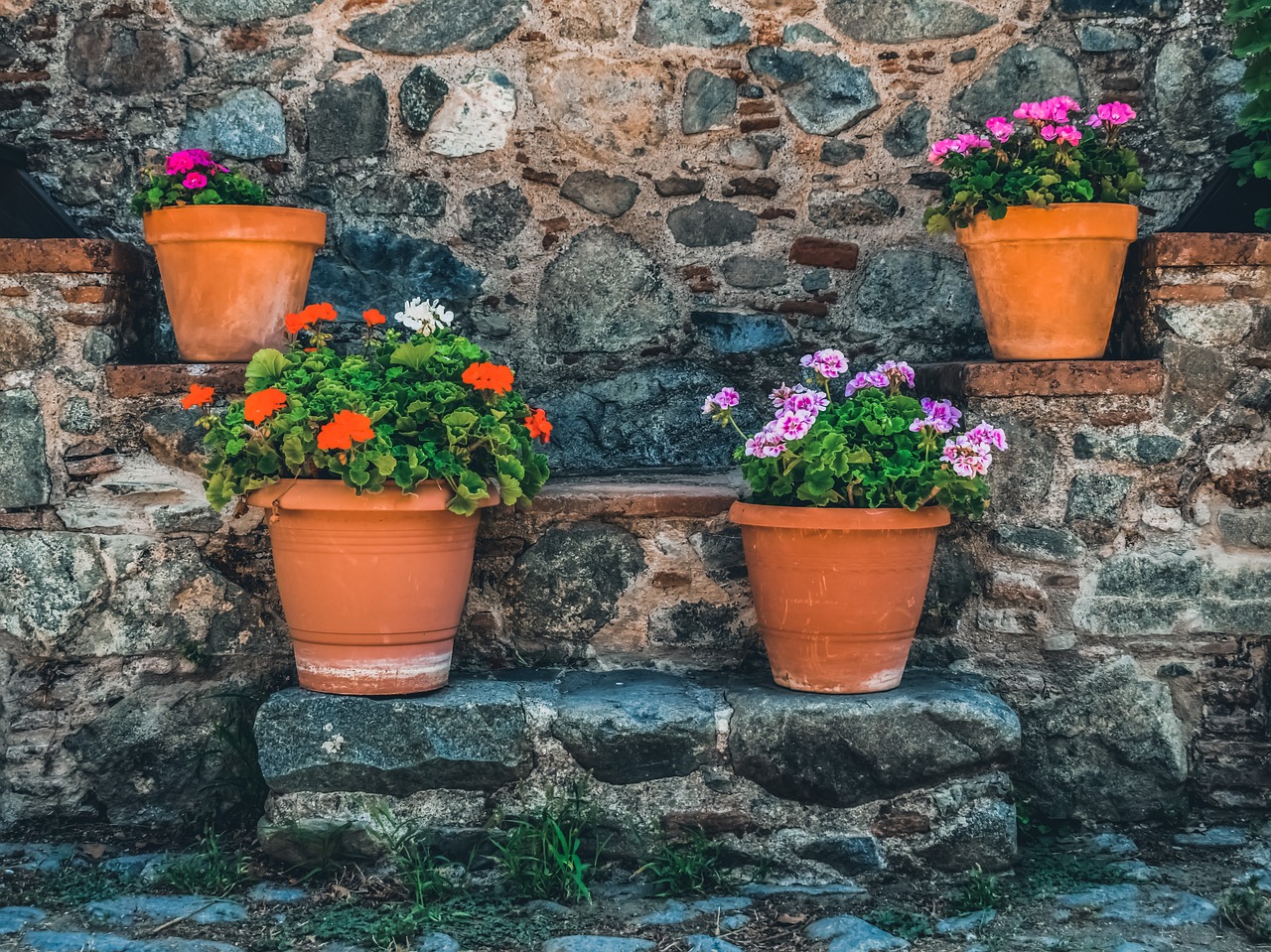
The Historical Significance of Pottery
Pottery is not just about crafting beautiful vessels; it is a reflection of human civilization itself. From the earliest days of humankind, pottery has played a crucial role in daily life, serving as a means for cooking, storage, and transportation. Imagine living in a time when every meal was prepared over an open flame, and the only way to store food was in clay pots. These vessels were essential for survival, showcasing the ingenuity of our ancestors. As societies evolved, so did the craft of pottery, becoming a canvas for artistic expression and a medium for cultural storytelling.
Throughout history, pottery has been a significant part of various cultures, acting as a barometer of social and economic development. For instance, in ancient Mesopotamia, pottery was intricately linked to trade. The unique styles and techniques of pottery often indicated the cultural influences of the region, revealing much about the people who made them. Each piece tells a story, whether it's a beautifully decorated vase from the Mediterranean or a simple earthenware bowl from a rural village. The designs and motifs often held symbolic meanings, representing everything from fertility to spirituality.
Moreover, pottery has served as a medium for artistic expression. The intricate designs and craftsmanship involved in creating pottery pieces reveal the values and aesthetics of the time. For example, the famous blue and white porcelain from China is not just functional; it embodies centuries of tradition and artistry. Similarly, Native American pottery often incorporates elements of nature and spirituality, making each piece a unique narrative of cultural identity.
In addition to its practical uses, pottery has also played a role in religious and ceremonial practices. Many ancient cultures used pottery in rituals, creating items specifically for offerings or as part of burial practices. The significance of these items often transcended their physical form, symbolizing a connection to the divine or the ancestors. This spiritual aspect of pottery underscores its importance as a cultural artifact, preserving the beliefs and practices of civilizations long gone.
To sum it up, the historical significance of pottery extends far beyond its utility. It is a testament to human creativity, adaptability, and the desire to communicate stories through art. As we delve deeper into the world of traditional pottery, we uncover layers of meaning that connect us to our past and enrich our understanding of cultural heritage. Pottery is indeed a vessel of history, carrying with it the essence of the people who shaped it and the cultures that embraced it.
- What is the oldest known pottery? The oldest known pottery dates back to around 20,000 years ago, discovered in China.
- How has pottery evolved over time? Pottery has evolved from simple utilitarian objects to complex artistic expressions, influenced by cultural, technological, and social changes.
- Why is pottery important in cultural identity? Pottery often reflects the traditions, values, and stories of a community, making it a crucial part of cultural identity.
- What materials are traditionally used in pottery? Traditional pottery is often made from clay, which can be sourced locally, and may include natural pigments for decoration.
- How can I start collecting traditional pottery? Start by researching different styles, visiting galleries and museums, and connecting with local artisans to understand the craft better.
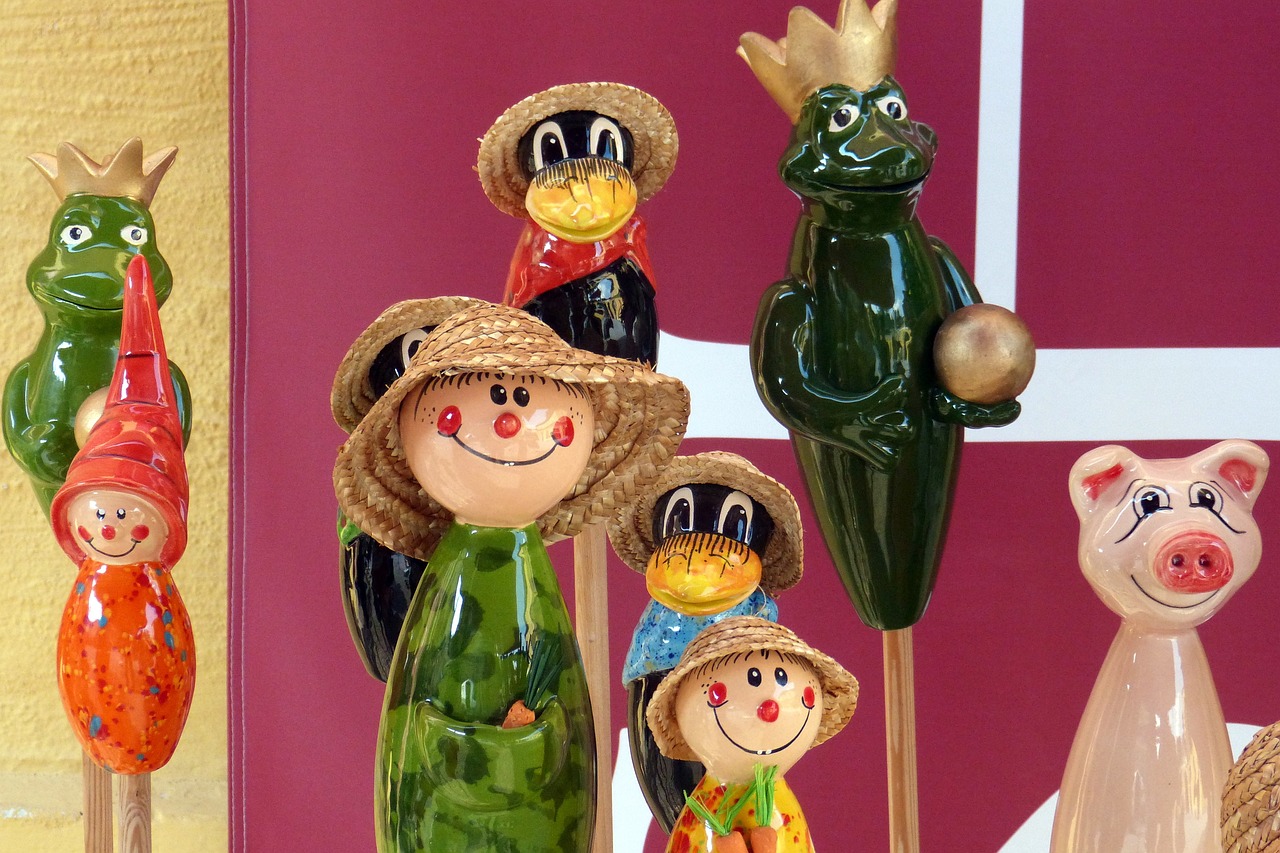
Traditional Techniques and Materials
When we think about traditional pottery, it’s easy to picture beautifully crafted bowls and vases adorned with intricate designs. But what goes into making these stunning pieces? The answer lies in the time-honored techniques and natural materials that artisans have used for centuries. These methods not only showcase the skill of the potter but also reflect the cultural heritage embedded in every piece.
One of the most fundamental techniques in traditional pottery is hand-building. This method involves shaping the clay manually, often using simple tools or even just the potter's hands. The three main hand-building techniques include:
- Pinching: This involves squeezing the clay with fingers to form shapes, often resulting in unique, organic forms.
- Coiling: Long ropes of clay are rolled out and stacked to create vessels, allowing for a variety of shapes and sizes.
- Slab Building: Flat pieces of clay are cut and assembled to form structures, which can lead to geometric designs.
Another significant technique is wheel throwing, which gained popularity with the advent of the potter's wheel. This method allows potters to create symmetrical and uniform pieces, such as plates and cups. The process involves spinning a lump of clay on a wheel while applying pressure to shape it. It’s a dance of hands and clay, requiring both skill and intuition.
As for materials, traditional potters primarily use natural clay, which varies significantly depending on the region. For instance, earthenware is often used in warmer climates, while stoneware, known for its durability, is favored in colder regions. The choice of clay affects not only the appearance but also the functionality of the pottery. The clay is often mixed with other natural materials, such as sand or grog (crushed fired clay), to enhance its texture and strength.
Moreover, the glazing process is a crucial aspect of traditional pottery. Glazes can be made from a variety of minerals and oxides, which provide color and a protective layer to the pottery. Traditional glazes are often derived from local resources, reflecting the landscape and culture of the area. For instance, ash glazes made from wood ash are common in many cultures, imparting unique textures and colors that can’t be replicated.
The firing process, too, is steeped in tradition. Pottery is typically fired in a kiln, where the heat transforms the clay into a durable material. Different firing techniques, such as oxidation and reduction, can dramatically alter the final appearance of the pottery. In reduction firing, for example, the kiln is deprived of oxygen, resulting in rich, deep colors that are highly sought after by collectors.
Today, many contemporary potters are rediscovering these traditional techniques and materials, blending them with modern aesthetics to create pieces that resonate with both history and innovation. This revival not only keeps the art of pottery alive but also ensures that the stories and traditions of our ancestors are passed down through generations.
Q: What is the difference between earthenware and stoneware?
A: Earthenware is generally more porous and less durable than stoneware, which is fired at higher temperatures, making it denser and more resistant to chipping.
Q: Can I use traditional pottery for cooking?
A: Many traditional pottery pieces are suitable for cooking, especially those made from stoneware. However, always check if the specific piece is labeled as food-safe.
Q: How can I tell if a pottery piece is handmade?
A: Handmade pottery often features slight imperfections, unique shapes, and variations in glaze. Machine-made pieces tend to be more uniform and perfect.
Q: What are some common traditional pottery techniques?
A: Common techniques include hand-building methods like pinching, coiling, slab building, and wheel throwing, each offering unique textures and shapes.
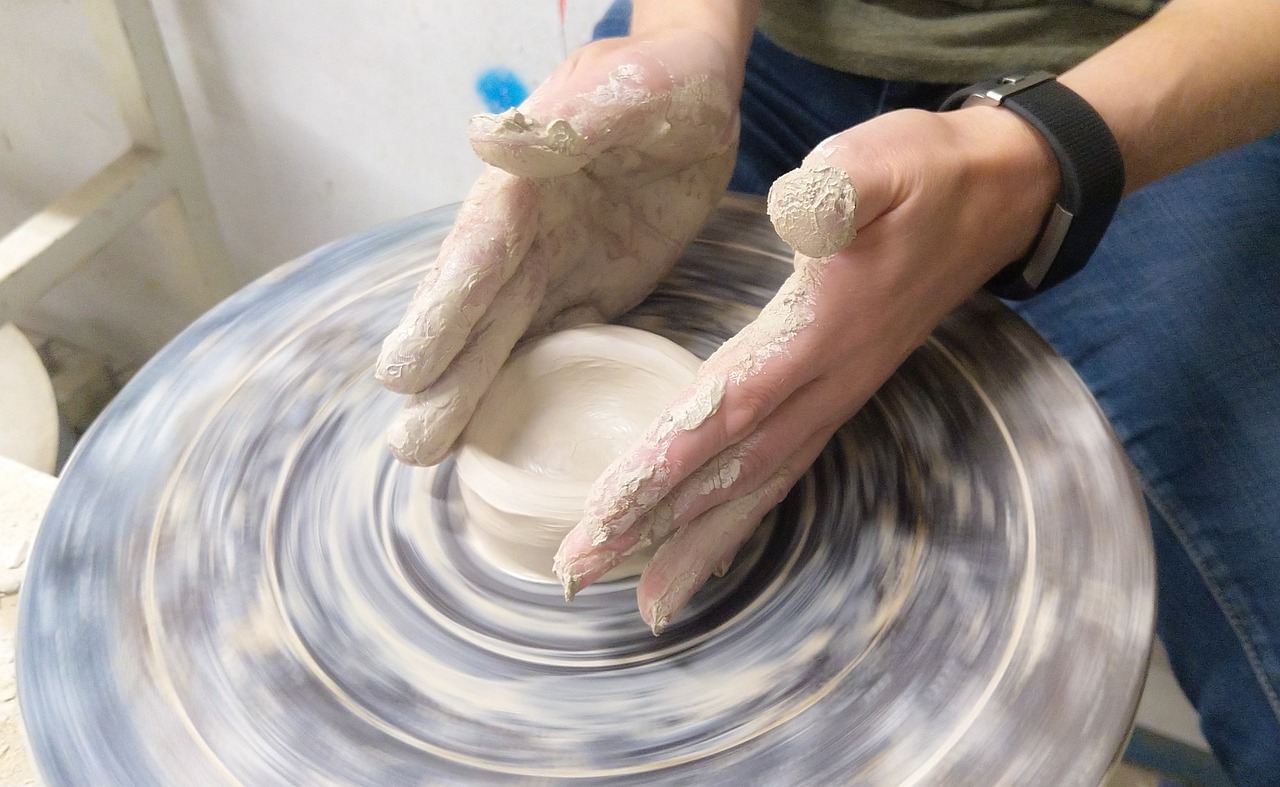
Modern Adaptations of Traditional Styles
In the ever-evolving world of art and craftsmanship, traditional pottery has found a remarkable way to adapt and thrive in modern times. This phenomenon is not just a mere trend; it’s a vibrant fusion of the old and the new, where contemporary artisans draw inspiration from age-old techniques and styles, breathing new life into them. Have you ever noticed how a simple vase can tell a story that transcends time? That’s the beauty of pottery—it’s not just about clay and glaze; it’s about culture, history, and innovation.
Today’s potters are not afraid to experiment. They are taking the foundational elements of traditional pottery—like hand-building techniques and natural materials—and infusing them with modern aesthetics. This blend results in stunning pieces that resonate with both history and contemporary art. For instance, you might find a traditional Japanese tea bowl that has been reimagined with bold colors and abstract patterns, making it a perfect fit for a modern dining table.
One of the most exciting aspects of these adaptations is how they reflect current societal values. Many contemporary potters are prioritizing sustainability in their work, utilizing eco-friendly materials and processes that honor the earth. This shift not only preserves the craft but also aligns with the growing global emphasis on environmental responsibility. Imagine a beautifully crafted pot made from reclaimed clay—each piece not only serves a functional purpose but also tells a story of renewal and respect for nature.
Furthermore, modern potters often incorporate technology into their practice. From 3D printing to digital design, the integration of tech has opened up new avenues for creativity. Traditional forms can be replicated with precision, while new designs can be explored without the limitations of manual craftsmanship. However, this raises an interesting question: does the use of technology dilute the essence of traditional pottery? Many artisans believe it enhances their ability to express their vision while still honoring the roots of their craft.
In addition to aesthetic and technological innovations, the cultural narratives behind pottery are being reinterpreted. Artists are using their work to address contemporary issues such as identity, migration, and social justice. For instance, a potter might create a series that reflects their personal journey or the stories of their community, merging traditional techniques with modern themes. This not only keeps the art form relevant but also creates a dialogue between the past and the present.
As we look at the broader picture, it's clear that modern adaptations of traditional pottery are more than just artistic expressions; they are a testament to the resilience and adaptability of cultural practices. They remind us that while styles may evolve, the essence of pottery—its ability to connect people, tell stories, and reflect values—remains timeless. So, the next time you admire a piece of pottery, take a moment to appreciate not just its beauty but the rich tapestry of history and innovation that it represents.
- What are some traditional pottery techniques still used today? Many artisans continue to use hand-building, wheel throwing, and glazing techniques that have been passed down through generations.
- How has technology influenced modern pottery? Technology, such as 3D printing and digital design, allows potters to explore new forms and replicate traditional styles with precision.
- Why is sustainability important in contemporary pottery? Sustainable practices help reduce environmental impact and promote the use of eco-friendly materials, aligning with global efforts to protect the planet.
- Can traditional pottery styles be completely reinvented? Yes, many contemporary potters reinterpret traditional styles, blending them with modern aesthetics and themes to create unique works of art.
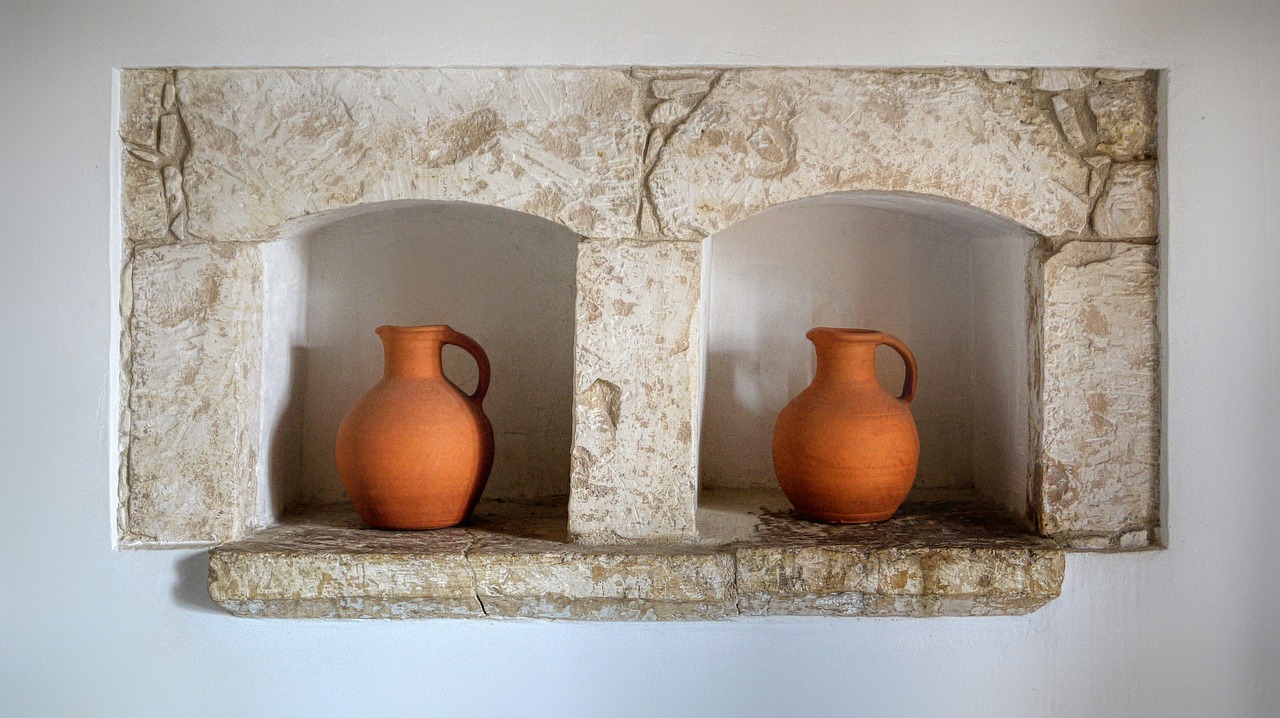
The Role of Pottery in Cultural Identity
Pottery is not just a craft; it is a reflection of cultural identity that transcends generations. Each piece of pottery tells a story, encapsulating the traditions, beliefs, and values of the community that created it. Imagine walking through a vibrant market filled with colorful ceramic pots, each one uniquely adorned, whispering tales of the artisans who shaped them. This art form serves as a vessel for cultural expression, connecting people to their roots and to one another.
In many cultures, pottery plays a crucial role in everyday life, serving practical purposes while simultaneously embodying cultural significance. For instance, in indigenous communities, traditional pots are often used in rituals and ceremonies, symbolizing fertility, abundance, and the connection to the earth. These practices highlight how pottery is intertwined with spiritual beliefs and community gatherings, fostering a sense of belonging among individuals.
Furthermore, pottery can be seen as a canvas for storytelling. Each design, color, and shape carries meaning, often depicting local myths, historical events, or natural elements. For example, the intricate patterns on Native American pottery often represent the natural world, while African pottery may feature designs that tell stories of ancestry and community heritage. This rich tapestry of narratives not only preserves history but also educates future generations about their cultural heritage.
As we delve deeper into the significance of pottery, we realize that it is a dynamic expression of identity. In today's globalized world, artisans are blending traditional techniques with modern influences, creating pieces that resonate with both local and global audiences. This fusion not only keeps the craft alive but also allows for a continuous dialogue between past and present, tradition and innovation.
Moreover, pottery serves as a bridge between cultures. Through the exchange of pottery styles and techniques, communities can share their stories and experiences. For instance, the influence of Japanese pottery can be seen in contemporary ceramic art across the globe, showcasing how cultural identities can evolve while still paying homage to their origins. This cross-cultural exchange enriches the art form, leading to a diverse array of styles and practices that celebrate both individuality and shared heritage.
In essence, pottery is a powerful medium for expressing cultural identity. It not only preserves traditions but also fosters a sense of community and belonging. As we navigate the complexities of modern life, the stories embedded in pottery remind us of our roots and the importance of cultural heritage. By celebrating and preserving these traditions, we ensure that future generations will continue to find meaning in the art of pottery.
- What is the significance of pottery in different cultures?
Pottery serves both practical and artistic purposes, reflecting the values, beliefs, and traditions of various cultures. - How does pottery contribute to cultural identity?
Pottery embodies cultural narratives and practices, helping to preserve heritage and foster community bonds. - Why is pottery considered a form of artistic expression?
Artists use pottery to convey personal stories and explore creative boundaries, making it a dynamic medium for artistic exploration. - How can pottery influence modern design?
Contemporary potters often reinterpret traditional styles, blending them with modern aesthetics to create unique works of art.
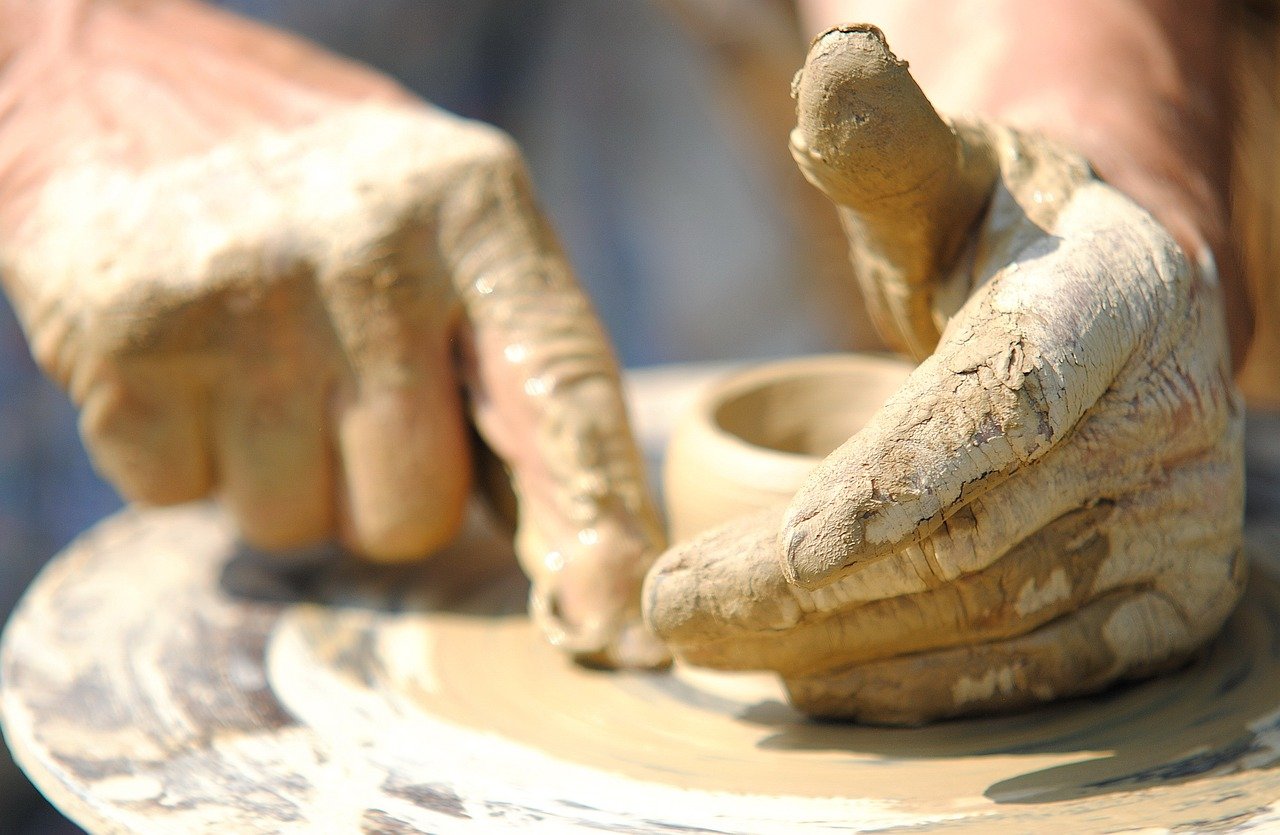
Environmental Impact and Sustainability
In an age where environmental consciousness is more crucial than ever, the pottery industry is undergoing a significant transformation. Traditional pottery, with its deep-rooted history, is now being re-evaluated through the lens of sustainability. This shift not only addresses the pressing concerns of our planet but also revitalizes ancient practices that align with eco-friendly principles. But what does this mean for artisans and consumers alike?
Historically, pottery production often involved methods that were not particularly kind to the environment. From the extraction of clay to the firing processes, traditional techniques sometimes resulted in significant ecological footprints. However, modern potters are now embracing sustainable practices that honor both the craft and the earth. This includes using locally sourced materials, which minimizes transportation emissions and supports local economies.
Moreover, many artisans are turning to natural glazes and non-toxic materials that reduce harmful chemicals in the production process. By utilizing organic compounds and avoiding synthetic additives, potters contribute to a healthier environment. For instance, some potters have started experimenting with alternative firing techniques, such as pit firing and wood firing, which can produce unique results while being less energy-intensive than conventional electric kilns.
Another fascinating aspect of this movement is the incorporation of recycled materials. Some contemporary potters are creatively using recycled glass, porcelain, and even industrial waste in their works. This not only diverts waste from landfills but also adds a layer of story and character to each piece. Imagine sipping coffee from a mug made with recycled materials; it’s not just a vessel, but a conversation starter about sustainability.
Furthermore, the pottery community is increasingly aware of its role in promoting sustainability. Many artists are joining forces to educate consumers about the importance of choosing handmade items over mass-produced ceramics. This shift encourages a mindset that values quality and longevity over disposable culture. When you invest in a piece of traditional pottery, you’re not just purchasing a product; you’re supporting a sustainable practice that respects both the craft and the planet.
To illustrate the environmental impact of traditional pottery versus modern sustainable practices, consider the following table:
| Aspect | Traditional Pottery | Sustainable Pottery |
|---|---|---|
| Material Sourcing | Often mined from distant locations | Locally sourced, reducing transport emissions |
| Firing Methods | High-energy electric kilns | Alternative methods like pit firing |
| Glazing | May contain toxic materials | Natural, non-toxic glazes |
| Waste Management | Higher waste production | Utilizes recycled materials |
As we dive deeper into the realm of pottery, it becomes clear that sustainability is not merely a trend but a necessary evolution of the craft. By embracing eco-friendly practices, potters are not only preserving their art form but also contributing to a healthier planet. This conscious shift serves as a reminder that every piece of pottery carries with it a story—one that reflects the values of both the artisan and the environment.
In conclusion, the journey toward sustainability in pottery is a beautiful blend of tradition and innovation. It challenges us to rethink our consumption habits and encourages us to appreciate the artistry behind handmade ceramics. So next time you admire a piece of pottery, remember the journey it took to get there and the positive impact it can have on our world.
- What is sustainable pottery? Sustainable pottery refers to ceramic practices that prioritize eco-friendly materials and methods, reducing environmental impact.
- How can I identify sustainable pottery? Look for pieces made from locally sourced materials, natural glazes, and those that utilize energy-efficient firing methods.
- Why is supporting traditional pottery important? Supporting traditional pottery helps preserve cultural heritage, promotes sustainable practices, and encourages local economies.
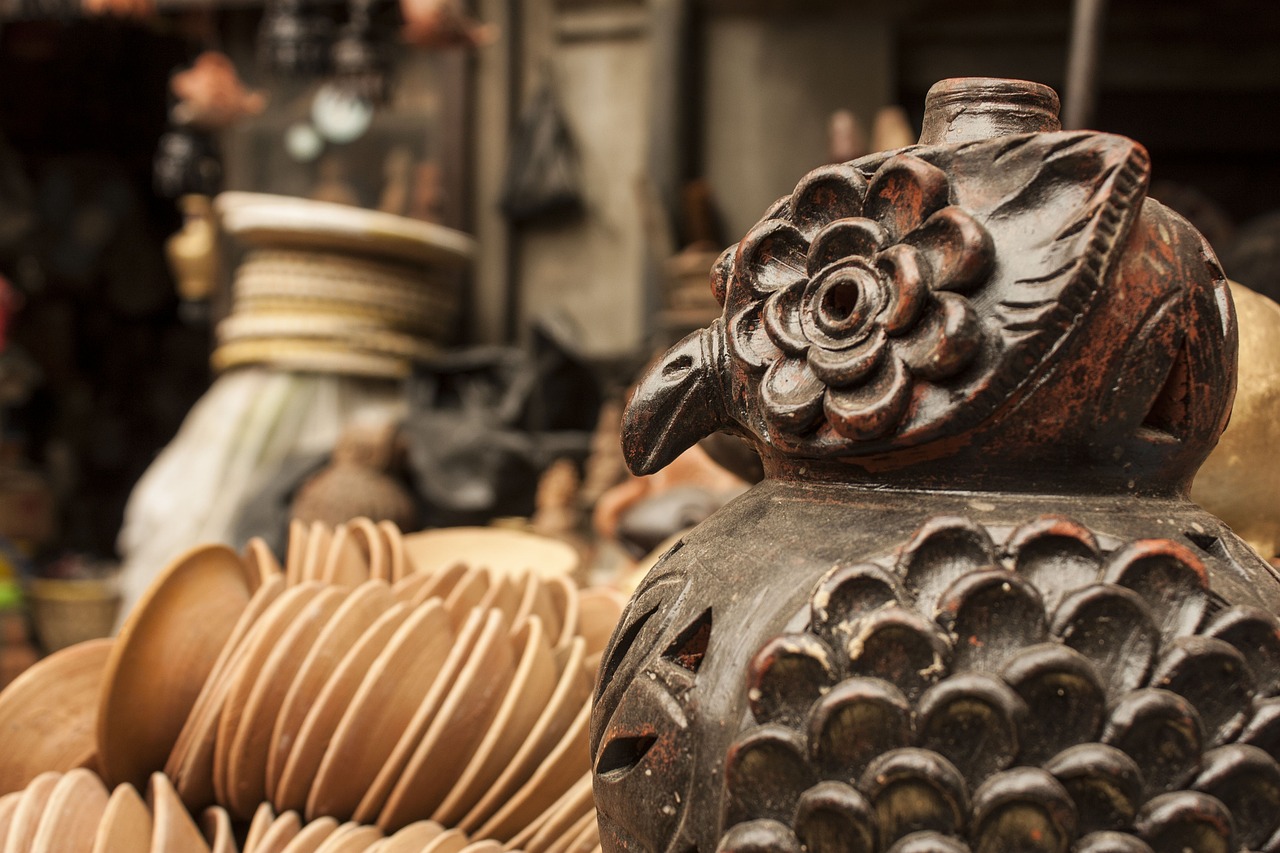
Pottery as a Form of Artistic Expression
When you think of pottery, what comes to mind? Perhaps it's those beautiful, intricate vases that catch your eye at an art gallery or the rustic charm of handmade mugs in a cozy café. Pottery is so much more than functional ware; it is a powerful medium of artistic expression that allows artists to convey their thoughts, emotions, and cultural narratives. Just like a painter uses a canvas, potters use clay to mold their visions into tangible forms. The beauty of pottery lies not only in its aesthetic appeal but also in its ability to tell stories, evoke feelings, and challenge perceptions.
In the hands of skilled artisans, clay transforms into a canvas for creativity. Each piece of pottery can be seen as a reflection of the artist's personality and experiences. The choice of color, texture, and shape can convey a myriad of emotions. For instance, a smooth, flowing form might evoke feelings of tranquility, while a jagged, asymmetrical piece could express chaos or turmoil. This personal touch makes every pottery piece unique, as if it has a story to tell. Artists often draw inspiration from their surroundings, cultural heritage, and even personal struggles. The result? A stunning array of styles and forms that resonate with viewers on various levels.
Moreover, pottery serves as a bridge between the past and the present. Many contemporary potters incorporate traditional techniques and motifs into their work, creating a dialogue between generations. This fusion of old and new not only honors the craftsmanship of previous artisans but also pushes the boundaries of what pottery can be. As a result, we see innovative designs that challenge conventional notions of ceramics. For example, some artists experiment with unconventional materials or integrate mixed media, leading to groundbreaking works that redefine the art form.
In addition to its aesthetic value, pottery also plays a vital role in social commentary and activism. Artists use their work to address pressing issues such as environmental sustainability, cultural appropriation, and social justice. By embedding these themes into their creations, potters can spark conversations and inspire change. For instance, a piece that incorporates recycled materials might highlight the importance of sustainability, while a work that reflects cultural symbolism can foster a deeper understanding of heritage and identity.
The allure of pottery as an artistic expression extends beyond its visual impact. The tactile experience of handling a ceramic piece adds another layer of engagement. The coolness of the clay, the smoothness of the glaze, and the weight of the object all contribute to a sensory experience that can evoke nostalgia or comfort. This physical connection can deepen the viewer's appreciation for the art, making it a more immersive experience.
In conclusion, pottery is not merely about creating functional items; it is a dynamic form of artistic expression that encapsulates the essence of human creativity. Whether through traditional techniques or modern innovations, potters continue to push the boundaries of this ancient craft, reminding us that art is not confined to galleries but is present in the everyday objects we use and cherish. So, the next time you pick up a piece of pottery, take a moment to appreciate the artistry and the story behind it.
- What materials are commonly used in pottery? Pottery is primarily made from clay, which can be mixed with other materials like sand or grog to enhance its properties. Glazes are also applied to add color and finish.
- How long does it take to create a pottery piece? The time varies depending on the complexity of the design and the techniques used. Simple pieces can take a few hours, while intricate works may take days or even weeks.
- Can anyone learn pottery? Absolutely! Pottery is a skill that can be learned through practice and dedication. Many community centers and art schools offer classes for beginners.
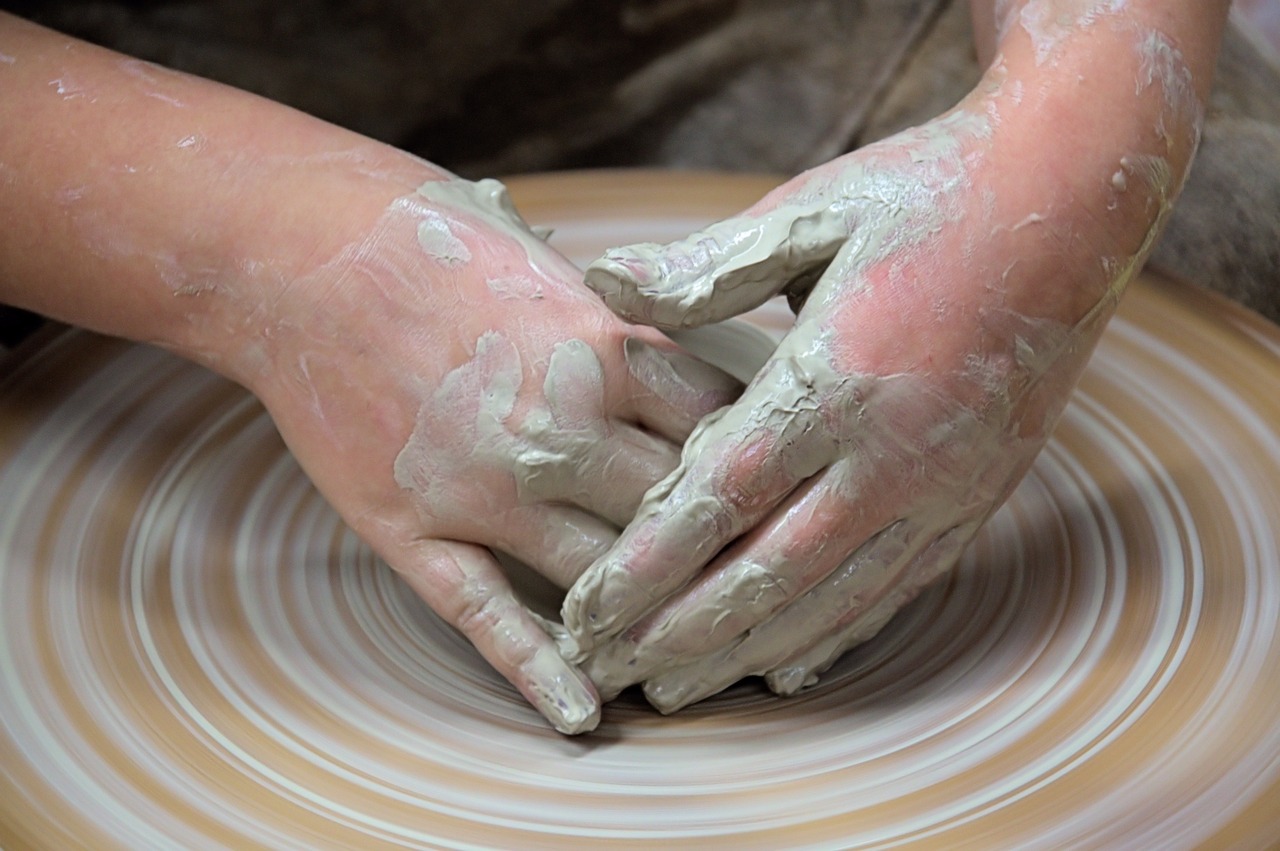
The Global Influence of Traditional Pottery
When we think about pottery, we often envision beautifully crafted bowls, vases, and plates. However, the influence of traditional pottery extends far beyond mere aesthetics; it serves as a cultural bridge that connects communities across the globe. From the intricate designs of Japanese ceramics to the vibrant colors of Mexican pottery, each piece tells a story, reflecting the history, beliefs, and practices of its origin. This cultural exchange is not just a relic of the past; it continues to shape and inspire contemporary artisans worldwide.
One of the most fascinating aspects of traditional pottery is how it has transcended geographical boundaries. For instance, the ancient techniques of pottery-making in China, such as the use of porcelain, have influenced various cultures. The fine craftsmanship and delicate designs have inspired potters in Europe and beyond, leading to the creation of unique styles that still pay homage to their Chinese roots. This is a prime example of how traditional methods can evolve while maintaining their original essence.
Moreover, traditional pottery acts as a canvas for cross-cultural dialogue. Artists today often draw inspiration from different cultures, blending techniques and styles to create innovative works that resonate with a global audience. For example, a potter in India might incorporate African tribal patterns into their work, creating a fusion that celebrates both heritages. This type of artistic collaboration not only enriches the pottery itself but also fosters a sense of unity among diverse communities.
In addition to artistic influences, traditional pottery plays a significant role in the economic landscape of many regions. In places like Morocco and Italy, pottery is not just an art form; it's a vital part of the economy. Local artisans often rely on the sale of their handmade pottery to support their families and communities. This economic reliance ensures that traditional techniques are passed down through generations, preserving not only the craft but also the cultural identity associated with it.
Furthermore, the global appreciation for traditional pottery has led to a resurgence of interest in traditional crafts. Many collectors and enthusiasts actively seek out authentic pieces, recognizing their value as cultural artifacts. This trend has prompted museums and galleries to showcase traditional pottery, providing a platform for artists to share their work with a broader audience. As a result, traditional pottery continues to evolve, adapting to contemporary tastes while honoring its rich heritage.
Ultimately, the global influence of traditional pottery is a testament to its enduring significance. It serves as a reminder that art knows no boundaries; it transcends borders, languages, and cultures. As we continue to explore the intricate world of pottery, let us celebrate the connections it fosters and the stories it tells, ensuring that this beautiful craft remains a vital part of our global heritage.
- What is the significance of traditional pottery in different cultures?
Traditional pottery holds immense significance as it reflects the history, beliefs, and practices of various cultures. It serves not just as functional items but as artistic expressions that tell stories of the people who created them.
- How has modern pottery been influenced by traditional techniques?
Modern pottery often incorporates traditional techniques, blending them with contemporary aesthetics. This fusion results in unique pieces that celebrate both the old and the new, enriching the art form.
- Why is collecting traditional pottery important?
Collecting traditional pottery helps preserve cultural heritage and supports artisans. It raises awareness about the importance of these crafts and ensures that traditional techniques are passed down through generations.

Collecting and Preserving Traditional Pottery
Collecting traditional pottery is not just a hobby; it’s a passion that connects enthusiasts to the rich tapestry of human history. Each piece of pottery tells a story, encapsulating the essence of the culture and era from which it originated. For many collectors, the thrill lies in the discovery of unique pieces that not only serve as decorative objects but also as historical artifacts. These items can range from ancient Greek amphorae to contemporary Native American pottery, each with its distinct character and charm.
Preserving traditional pottery is equally important, as it ensures that future generations can appreciate the artistry and craftsmanship of their ancestors. Pottery is often fragile, and without proper care, it can easily be damaged. Here are some essential tips for collectors to maintain their treasures:
- Keep it clean: Regular dusting with a soft cloth helps maintain the beauty of the pottery. Avoid using harsh chemicals that could damage the glaze.
- Store wisely: When not on display, pottery should be stored in a cool, dry place, away from direct sunlight to prevent fading and deterioration.
- Handle with care: Always hold pottery by its base and avoid touching painted or glazed areas, as oils from your skin can affect the finish.
The role of collectors extends beyond personal enjoyment; they are vital in the preservation of cultural heritage. Many collectors actively participate in museums and cultural institutions, helping to curate exhibitions that educate the public about the significance of traditional pottery. These collaborations can foster a greater appreciation for the art form and encourage new generations to engage with their cultural roots.
Moreover, the rise of online platforms has made it easier than ever for collectors to share their collections and knowledge. Social media groups and dedicated websites allow enthusiasts to connect, trade pieces, and discuss preservation techniques. This community aspect enhances the experience, as collectors can learn from one another and share their passion for traditional pottery.
In addition to private collections, many museums are dedicated to showcasing traditional pottery. These institutions play a crucial role in preserving and interpreting the cultural significance of pottery from various regions. They often conduct research, host exhibitions, and provide educational programs that highlight the importance of traditional craftsmanship. By doing so, they ensure that these art forms are not forgotten but celebrated and appreciated by all.
In conclusion, collecting and preserving traditional pottery is a meaningful endeavor that honors the past while enriching the present. As collectors and institutions work together, they help safeguard the stories and traditions that each piece embodies, ensuring that the beauty and significance of traditional pottery continue to inspire future generations.
Q: What should I look for when starting a pottery collection?
A: Start by researching different styles and cultures. Look for pieces that resonate with you and consider their historical significance. It's also wise to buy from reputable dealers to ensure authenticity.
Q: How can I tell if a piece of pottery is authentic?
A: Authentic pottery often has unique markings, imperfections, and characteristics that reflect the handmade process. Researching the artist or culture can also provide valuable insights.
Q: What is the best way to display my pottery collection?
A: Display pottery in a well-lit area, but avoid direct sunlight to prevent fading. Use shelves or display cases that allow for airflow and prevent dust accumulation.
Frequently Asked Questions
- What is the historical significance of pottery?
Pottery has played a crucial role in ancient cultures, serving not just as functional items for daily use, but also as a medium for artistic expression and trade. It reflects the values, practices, and technological advancements of various civilizations throughout history.
- What traditional techniques and materials are used in pottery?
Traditional pottery often utilizes natural materials such as clay, various minerals, and glazes made from local resources. Techniques like hand-building, wheel throwing, and firing in traditional kilns showcase the craftsmanship and cultural heritage embedded in these practices.
- How have modern potters adapted traditional styles?
Contemporary potters frequently reinterpret traditional styles by blending age-old techniques with modern aesthetics. This fusion creates unique pieces that reflect both historical significance and current design trends, resulting in innovative works of art.
- What role does pottery play in cultural identity?
Pottery serves as a vessel of cultural identity, allowing communities to express their heritage and preserve traditions. It often tells stories and symbolizes the values of a culture, fostering a sense of belonging among its people.
- What is the environmental impact of pottery production?
The production of pottery can have various environmental implications. However, there is a growing shift towards sustainable practices, including the use of eco-friendly materials and methods that respect the earth, minimizing waste and ecological footprint.
- How is pottery used as a form of artistic expression?
Pottery is a powerful medium for artistic exploration, allowing artists to push boundaries and convey personal narratives through their ceramic creations. This artistic expression enriches the art world and attracts collectors and enthusiasts alike.
- What is the global influence of traditional pottery?
Traditional pottery has a global impact, with cross-cultural exchanges shaping the styles and techniques used in different regions. This interaction has led to a rich tapestry of ceramic art that reflects diverse traditions and innovations.
- Why is it important to collect and preserve traditional pottery?
Collecting and preserving traditional pottery is essential for maintaining cultural heritage. Collectors, museums, and institutions play a vital role in safeguarding these artifacts, ensuring that future generations can appreciate and learn from them.



















